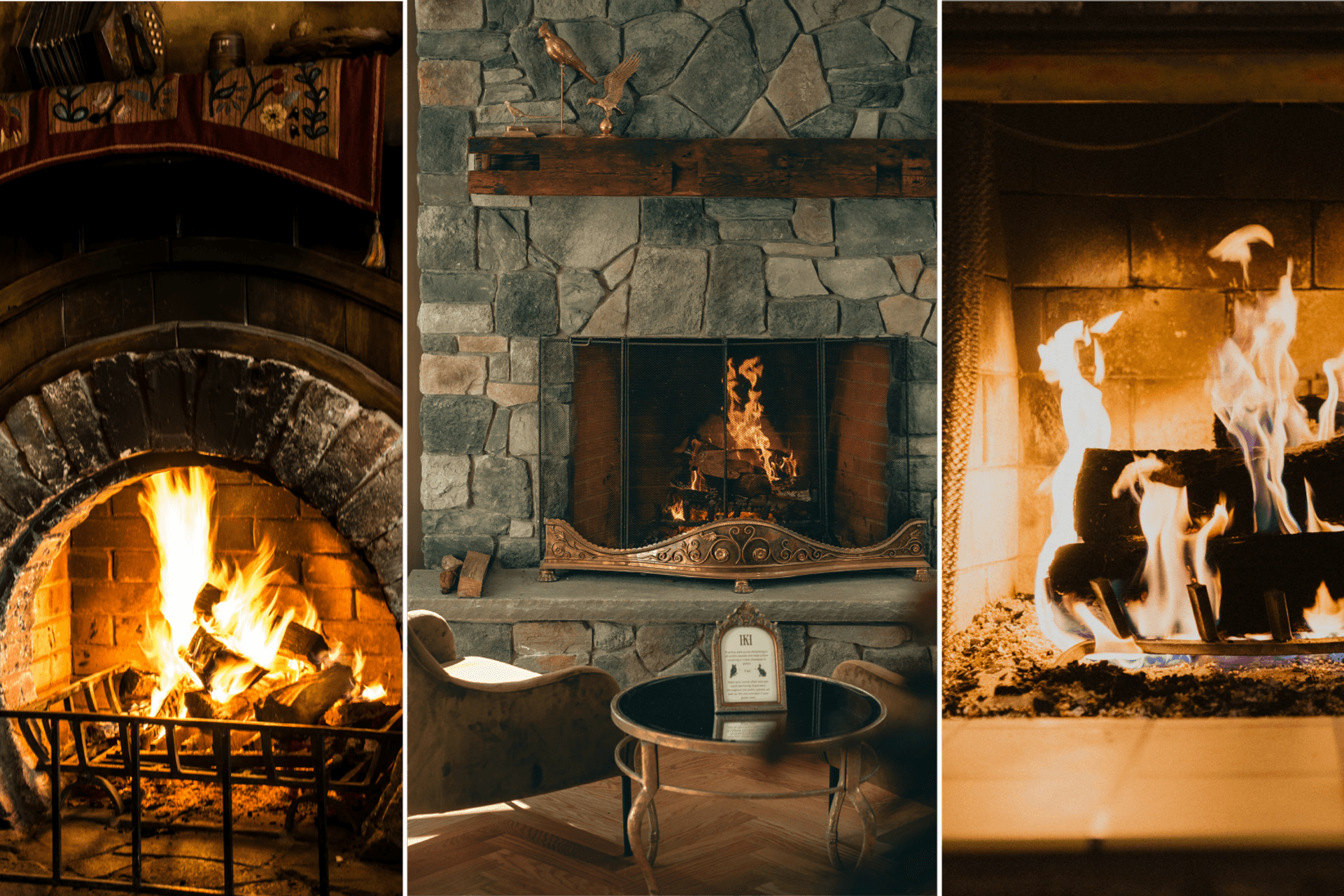Wood Fireplaces: Know your Flue Types

The concept of a wood-burning fireplace in the home has been around for thousands of years. And while the nostalgia of them remains unchanged, the way these fireplaces operate has evolved significantly over the years. From medieval times when open wood fires were made of stones and bricks, to today's glass-fronted, sealed fireplaces, wood fires now offer increased efficiency, safety, and greater design freedom. To help you understand how wood fireplace technology has advanced over the years, we explore the main types of fireplaces and why Direct Vent fireplaces offer homeowners a better choice for heating their homes today.
There are essentially three types of flues - Open, Basic Vent, and Direct Vent. We explain how the different flues work to help you understand which type of wood fireplace is right for your home.

Basic Vent Wood Fireplaces
Where air for combustion comes from: Inside the home
Flue Type: Unbalanced
Heat Produced: Radiant
Historically, open wood fireplaces were the standard for most home heating, dating back hundreds, if not thousands of years.
They operate by drawing air from the room for combustion and expelling the hot exhaust air out of a chimney. Radiant heat is then produced directly from the flames of the burning fire.
However, while you can’t deny the cosy feeling of a crackling open fire, they are particularly inefficient – most of the heat produced escapes out the chimney, resulting in wasted energy and higher fuel consumption.
They also require a constant flow of air to feed the fire which creates pesky cold draughts. Safety is also a consideration when it comes to open wood fires – sparks and embers can easily escape, potentially causing fires, and with their open front, smoke and fumes easily enter the home.
While open fires are still designed in some new homes today, they are less common and are predominantly used for ambience or a design feature, and supported by other heating appliances.

Direct Vent Wood Fireplaces
Air Intake for Combustion: Outside the home
Flue Type: Balanced
Heat Produced: Radiant and convection
Introduced to address the inefficiency and safety concerns of open wood fires, Basic Vented Wood fireplaces have an enclosed glass door and a metal flue that directs smoke and exhaust air outside the home.
Air is still drawn from the room for combustion, however, a portion of this air also enters a room air heating circuit. This circuit generates convection heat as the air circulates around the back of the hot firebox, which is then pushed back into the room.
The glass-door design also enhances radiant heat, with both convection and radiant heat improving safety, efficiency, and energy consumption.
While Basic Vented Wood fireplaces offer several improvements, including increased efficiency and a slower burn time, they still suffer from some of the same issues as open wood fires, such as heat loss, poor indoor air quality, and the requirement for sufficient indoor air circulation or external vents.

Direct Vent Wood Fireplaces
Air Intake for Combustion: Outside the home
Flue Type: Balanced
Heat Produced: Radiant and convection
Escea has further enhanced Basic Vented fireplaces by exclusively using outside air to fuel the fire, a system known as Direct Vent Technology. This innovation ensures the fire doesn’t interfere with indoor air circulation, making them ideal for modern, airtight homes built today.
Rather than using room air for combustion, Direct Vent fireplaces feature a sealed combustion chamber or 'firebox' that draws air from outside the home and expels exhaust air back outside via a dual-layer flue system, or a ‘balanced flue’.
Radiant heat is produced directly from the glass-door, while convection heat is produced by the room air that travels around the firebox (‘room air heating circuit’). However, unlike Basic Vented fireplaces, this circuit is completely separate from the firebox, so the combustion air and room air never mix.
This system minimises heat loss, eliminates cold draughts, doesn’t require external vents, and heats the home more efficiently – for better overall home performance.
Direct Vent wood fireplaces also offer more design flexibility, as they can be installed in more locations around the home, including on exterior or internal walls, or in the centre of a room.
Direct Vent wood fireplaces exclusively use outside air to fuel the fire and return all exhaust air back outside, resulting in a fireplace that heats the home more efficiently.
All Escea wood fireplaces feature Direct Vent Technology and are available in both inbuilt and freestanding models.
